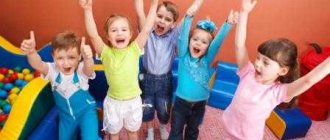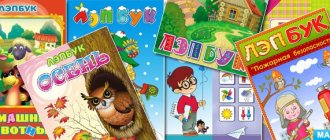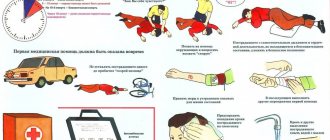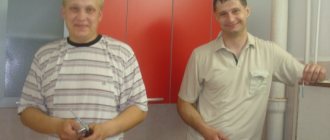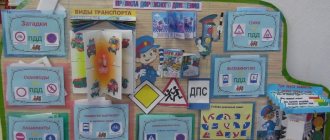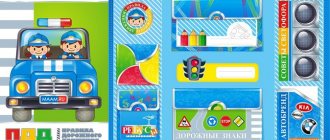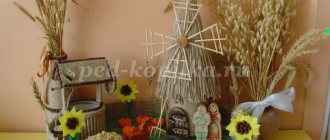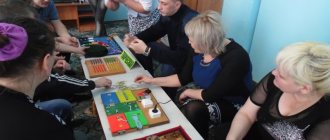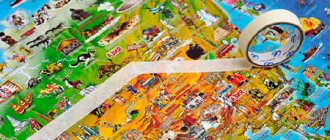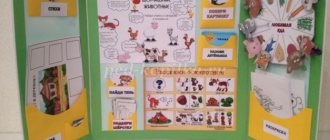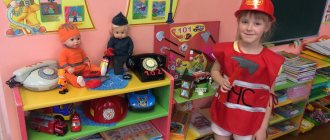The health of children should always come first. And everyone knows that nothing strengthens it more than physical education. Therefore, love for it must be instilled from a very young age. In order to somehow get children to move more and, most importantly, usefully, they need to be interested. Non-traditional physical education equipment will just help them look at sports from a different perspective and turn exercise into a fun game. This will significantly diversify a child’s life. In addition, you can make non-traditional physical education equipment with your own hands.
What it is
Various exercises are very important for children to help develop fine motor skills. This, above all, has a positive effect on their psyche and reduces the incidence of illness. Non-traditional do-it-yourself physical education equipment, a photo of which you can see in our article, puts the emphasis on such exercises.
The big plus is that with the help of such equipment you can play games of various types:
- training;
- entertaining;
- adversarial.
In principle, if you use your imagination, you can even prepare a special performance with interactive inserts (for example, how to defeat Koshchei using physical education classes).
How to make non-traditional physical education equipment with your own hands in kindergarten and at home
This equipment is very easy to make. Do-it-yourself non-traditional physical education equipment is made from available materials: bottles, caps, ropes, Kinder surprise packaging and other things that can be found in every home.
It doesn't take much time to make. You can also involve children to help. They will be very interested. When creating products, you should try to use your imagination and come up with something of your own. There are no restrictions here. But, of course, you can take advantage of already known developments in this area.
3D layouts
This type of work is considered the most difficult, but at the same time the most realistic. When making such crafts, a hard surface is used. When working on it, you can use small figures of men. But, unfortunately, not every home has them. If such figures are not available, you should use wire. It will help you produce products of any design and shape.
You can capture the moment an athlete pole vaults. To do this you need to do:
- the pole itself;
- crossbar design;
- figurine of an athlete.
When preparing an athlete performing a pole vault, you need to remember the safety rules. Therefore, when doing crafts, it is worth laying a mat underneath, made in the form of a sponge.
Bilbock
Everyone knows the game where a ball tied to a stick needs to be thrown into a special bowl. This is bilboke. Making such non-traditional physical education equipment with your own hands from available materials is as easy as shelling pears. For this you will need:
- plastic bottle with cap;
- wool thread;
- packaging from Kinder Surprise;
- decorations.
First you need to cut off the bottom of the plastic container. It is advisable to do this so that there are no pointed ends left. Using an awl, a hole is made in the yellow Kinder egg through which the thread is threaded. To prevent it from jumping out, a knot is tied at its end. The second end of the rope is threaded through the neck and screwed together with the lid. In order to make the bilboke more colorful and attractive, it should be covered with bright tape. You can use printed pictures, glitter and beads.
Games with bilboke help develop reaction and coordination of movements.
Applique with swimmers
Cardboard is used as a basis for appliqué. It is on this that all the necessary parts are glued. First you need to take blue colored paper. Then it needs to be cut into long uneven strips (they will represent the water in the pool). After this, the swimmers are cut out. Their face will be a white circle, their body will be a small rectangle of any color, and their arms will be white stripes.
Most of the cardboard is sealed with blue stripes. The existing swimmers are carefully glued on top of them. A judge and spectators are depicted on a blank piece of cardboard.
Such an application involves the child using several performance techniques at once. It is quite simple: the implementation of such an idea does not involve any difficulties.
Pouch
It would seem, how to use it? But it can be found in many applications. For example, bags can be placed on the head so that children maintain their posture at all times. Since problems with spinal curvature are becoming more common, such exercises will be very useful. You can sew a bag from ordinary thick fabric. The filler will be salt or sand.
Magic bottle
A very simple product. To create it you will need a transparent plastic bottle, a cocktail straw, confetti or foil.
You need to make a hole in the lid. A tube will be inserted there. Small confetti, cut foil or large glitter are placed in the bottle itself.
The child should inhale through the nose and exhale through the mouth into a tube. This way he masters the correct breathing technique and watches the cheerful “fireworks” inside the bottle.
Air football
A very interesting and simple game. You don’t need a lot of materials to create such non-traditional physical education equipment with your own hands. All you need is a large box lid (or just cardboard), a plastic cup, colored paper, glue, straws and a small ball.
It is also easy to do. The lid of the box (if it doesn’t exist, you can simply make the sides out of cardboard) is covered with green paper on the inside. This will create something like a field. The gate can be made from halves of a plastic cup. They score goals on such a field using straws. You need to use a stream of air to drive the ball into the makeshift gate.
Features of children's crafts on the theme of sports
There are more than 200 thousand types of sports in the world, and in the future children will definitely find one that suits them. But it is necessary to give an understanding from a young age of how important this activity is. That is why teachers assign homework assignments on how to independently make crafts on the theme “sports.”
It is not at all necessary to have professional subjects to get started. You can get by with a basic set: scissors, colored paper, cardboard, glue, plasticine, thread or natural materials.
The main thing is that the item will be made by the child himself, developing his creative potential. Parents should not completely interfere in the process; it is enough to just guide the child, competently advising materials and progress of work.
Beast racing
Using regular tape, a beautiful stick and a soft toy, you can make an exciting game that will help develop fine motor skills in your child’s hands. A soft toy is tied at one end, and the other end is tied to a handle. It is important that the ribbons are all the same size. The task is simple: you need to twist the handle, winding the rope around it. This way the toy animal will slowly move towards the baby. You can organize whole competitions.
Master class “Sports didactic games for physical education of preschool children”
MBDOU kindergarten No. 1 “Smile” of compensatory type
for teachers:
“Sports didactic games for physical education of preschool children”
Prepared by:
head of physical education
Aptrieva O.D.
All children are individual, each of them is unique and
you must find the key to everyone!
Play is not only a source of positive emotions, it is also an opportunity to develop qualities necessary for later life. While playing, a child, without even knowing it, can acquire new knowledge, skills, abilities, and develop abilities. Any game is, first of all, communication with peers or adults. And it is at this moment that the child learns to respect other people’s victories and endure his failures with dignity. From the wide variety of games, I would like to highlight didactic games, which in the hands of a teacher become an interesting, exciting, emotional and creative means of educating a child’s harmoniously developed personality. The didactic games for physical education presented below help to consolidate in children the knowledge acquired in thematic classes in physical education. Their main goal is to develop children’s sustainable interest in physical education and sports. All games are multifunctional. They not only develop interest in sports, but also contribute to the formation and development of mental processes:
- development of perception of color, shape, size, space, time; - development of visual and auditory attention; — formation and development of mental operations (comparison, juxtaposition, generalization, exclusion, classification), operations of analysis and synthesis; formation of logical thinking in children; - formation of general and fine motor skills of the hands.
I made all the games with my own hands. To make the games, photographs and symbols of sports, as well as pictures from board games and coloring books, were used.
Methodological recommendations for the use of didactic games in physical education
- Didactic games should be played during independent or joint activities of children and the teacher.
- To play board games, you should choose a table at which all participants in the game can sit comfortably.
- Participation in games by a teacher increases children’s interest in games and contributes to the development of friendships.
- To develop activity and independence, it is advisable to assign the role of leader to one of the children.
- The new game should be clearly and concisely explained, and individual points can be shown.
- The course of the game and its rules are explained before the start. If necessary, the teacher can show and use questions to find out how the children understood the game.
- All instructions during the game should be given in a calm tone, marking the correct completion of tasks and compliance with the rules.
- Children's activities in the game are assessed by all participants; At the same time, it is important to note compliance with the rules, quality of answers, independence in organizing and conducting games.
- After the game, it is necessary to give an objective analysis of the behavior of all the players, their compliance with all the rules, which contributes to the formation of friendly relations and the conscious attitude of each child to his behavior.
Description of educational games
"Sport equipment"
Goals and objectives:
to develop children’s interest in physical education and sports;
introduce children to sports equipment; teach children to recognize and name sports equipment, determine its purpose; develop thinking, attention, memory, logic. Age:
3 – 4 years.
Rules:
The set includes cards with black and white images of sports equipment and color parts of these pictures (from 3 to 12 parts).
The child selects a black and white picture and superimposes the colored parts of the picture onto it. After the child collects the picture, he must name the sports equipment that is depicted on it. Complication:
Collect a picture without relying on a black and white image. Explain how this equipment can be used.
"Fold the picture"
Pictures depicting sports and equipment are cut into various geometric shapes. Goals and objectives:
to develop children’s interest in physical education and sports;
introduce children to sports; teach children to recognize and name sports; develop imagination, thinking, logic. Age:
5 – 7 years.
Rules:
the player assembles a picture from parts. Having collected, the child tells what is shown in the picture.
"Find a Pair"
Goals and objectives:
to develop children’s interest in physical education and sports;
introduce children to sports; teach children to recognize and name sports equipment and equipment, determine what sport it belongs to; develop the ability to analyze and generalize; develop creative thinking and imagination. Age:
3 - 5 years
Rules: Option 1:
play from 2 to 4 people.
The presenter sorts the cards into pairs and divides them equally between the players. On command, players must pick up paired cards and fold them. The winner is the one who first completed the task and correctly named the sports equipment. Option 2:
play from 2 to 4 people and a leader. The presenter sorts the cards: puts one card from a pair into one pile, and the second card into another. He distributes one pile to the players, and places the second on the table with the pictures facing down. The presenter takes one card and shows it to the players. The player who has a pair from this card names what is shown in the picture and what sport it is used in. If the answer is correct. Then the player takes the card for himself, if not, then the presenter keeps the card for himself. The one with the most collected pairs wins.
"Two halves"
Pictures depicting sports equipment and the main types of equipment movements are cut into two halves.
Goals and objectives:
teach children to recognize and name sports equipment and basic types of movement;
develop thinking and memory; develop interest in physical education. Age:
2 – 3 years.
Rules: 1 option.
The child puts the two halves together to make a picture.
Option 2.
The child looks for the desired half in a stack of pictures.
Having collected the picture, the child must name what is depicted on it. Option 3.
Having collected the picture, the child must name what is depicted on it. If this is a movement, then the child must show it. If this is equipment, then the child must find it in the group and show what exercises can be performed with it.
"Good and bad"
Goals and objectives:
teach children to have a healthy lifestyle;
teach children to compare good and bad, useful and harmful; instill in children the desire to lead a healthy lifestyle; develop thinking, logic, memory. Age:
3 – 6 years.
Rules:
children are given cards that depict situations harmful to health. Players must determine why it is harmful and find a pair of cards that depict a situation that is healthy.
“Relax actively”
(cubes)
Goals and objectives:
develop interest in physical activity;
teach children to recognize and name types of outdoor activities; develop memory, thinking, logic. Age:
3 – 6 years.
Rules:
assemble the cubes so that you get a whole image, based on the finished picture.
Complication 1:
after collecting the image, the child must name what is shown in the picture.
Complication 2:
assemble an image from memory without relying on a finished image.
"Sports Domino"
Goals and objectives:
teach children to recognize and name sports;
develop memory, logic, thinking. Age:
4 – 6 years.
Rules:
The dice feature symbols of sports. 2 – 4 people play. Before the start of the game, the dice are laid face down on the table and mixed. Each player chooses any seven dice. The remaining bones remain on the table - this is the “bazaar”. The player who has the double picture tile goes first. If several players have a tile with a double picture, then the first player is chosen by counting. Next, the players take turns placing dice to the right and left of the first, placing the same picture of the other to the picture of one dice. If the player (whose move) does not have a dice with the required picture, then he takes a dice at the “bazaar”. The one who has no dice left (or the fewest) wins.
"Sportloto"
Goals and objectives:
to develop children’s interest in physical education and sports;
teach children to recognize and name sports; develop attention and memory. Age:
5 – 7 years.
Rules:
I play with 2-6 people. Each player takes 2-3 game cards, on which symbols of sports are depicted instead of numbers. The driver takes out a chip with a symbol from the bag, names the sport and shows it to the players. The one who has such a symbol on the game card covers it with a token. The player who covers all the symbols with tokens the fastest wins.
"Sportmemorina"
Goals and objectives:
to develop children’s interest in physical education and sports;
teach children to recognize and name sports; develop memory. Age:
5 – 7 years.
Rules:
2 – 6 people play. Paired cards with sports symbols are laid out face down on the table in random order. Players alternately turn over two cards. If the symbols on the cards are the same, then the player takes them for himself and makes the next move. If the symbols are different, then the cards are turned over and the next player makes a move. The game ends when the players have all the cards. The one who collects the most pairs wins.
"Sports in winter and summer"
Goals and objectives:
to develop children’s interest in physical education and sports;
teach children to recognize and name sports; develop logic, memory, thinking, ability to classify and sort sports. Age:
5 – 7 years.
Rules:
The player is asked to select symbols (images) of only winter or only summer sports. Then he names these sports; explains why they are summer or winter; tells how the winner is determined.
"Sports Guessing Game"
Goals and objectives:
replenish and consolidate children’s knowledge about sports;
develop thinking and memory. Age:
4 – 7 years.
Rules:
the presenter (teacher) mixes the playing fields (each shows 6 different sports) and distributes them among the children.
Then the presenter shows a card with a picture of a sport and names it. The player whose field contains the same sport takes it and places it on top of his field and repeats the name. The player who covers their playing fields with cards the fastest wins. Complication:
play the same way, but the name of the sport is called by the player on whose field there is the same sport. In case of an incorrect answer, the presenter names the correct answer, gives the card to the player, and the player places a penalty token on top of the card that he placed on the playing field. The one with the fewest penalty tokens wins.
"The Fourth Wheel"
Goals and objectives:
develop interest in physical education and sports;
consolidate children's knowledge about sports, physical education, hygiene and health; develop logic, thinking, memory. Age:
4 – 7 years.
Rules:
The player takes one card with four pictures on it. The player names what is shown on the card, then covers the extra picture, explaining why it is extra.
“Get ready to exercise”
Goals and objectives:
to develop children’s interest in physical education and sports;
teach children to compose exercises for morning exercises; develop memory, thinking, logic. Age:
5 – 7 years.
Rules:
The player chooses a picture card for the starting position. Then he selects movements for the exercise itself (counting 1-2 or 1-4) so that the intermediate positions of the body and limbs are combined. After composing the exercise, the child must complete it. There can be several people playing. They take turns creating an exercise, and the rest must complete the task.
"What is what"
Goals and objectives:
to develop children’s interest in physical education and sports;
teach children to recognize and name sports; learn to identify and name the necessary inventory, equipment, equipment for a given sport; develop thinking, memory, logic. Age:
5 – 7 years.
Rules:
The player selects a card with a sport. Next, he selects the symbol of this sport, inventory and equipment for it. Several people can play at the same time: whoever collects the row faster.
"Collect a symbol"
Goals and objectives:
to develop children’s interest in physical education and sports;
introduce children to the symbols of sports; teach children to recognize and name the sport; develop thinking, attention, memory. Age:
5 – 7 years.
Rules:
From the cut pieces the player assembles a symbol of the sport. Then he names this sport and talks about it.
"Sports Four"
The game uses cards depicting the sport and its symbol. They are divided into groups of four cards, united by one symbol (standing in the upper corner), but having different images of this sport.
Goals and objectives:
to develop children’s interest in physical education and sports;
teach children to distinguish between sports (by season, by equipment, by location); develop memory, thinking, logic. Age:
4 – 7 years.
Rules:
4 – 6 people play. Players are dealt 4 cards. The task of each player is to collect a group of cards with one sport. To do this, players pass each other the unwanted card face down in a clockwise direction. The winner is the one who collects 4 cards with one sport faster.
"Me and my Shadow"
Goals and objectives:
to develop children’s interest in physical education and sports;
teach children to recognize starting points; develop attention and memory. Age:
5 – 7 years.
Rules:
I play with 2-6 people. Each player takes 2-3 game cards, which depict silhouettes of the starting positions and movements. The driver takes out a chip with a colored image from the bag and shows it to the players. The one who has the silhouette of this image on the game card takes a chip and covers the silhouette with it. The player who covers all the silhouettes with images the fastest wins.
"Make a guess - guess"
Goals and objectives:
to develop children’s interest in physical education and sports;
teach children to recognize sports by characteristics and definitions; teach children to guess a sport based on its characteristics and definitions; develop memory, thinking, logic. Age:
5 – 7 years.
Rules:
2 or more people can play. The driver (adult or child), using cards - “definitions and signs”, guesses the sport. Players try to guess the sport. The one who guessed correctly becomes the driver.
Cards of definitions and characteristics
Robin Hood
With the help of non-traditional physical education equipment, you can organize an entire throwing tournament with your own hands. You don't need a bow and arrow to become a real Robin Hood. Just a tray of eggs, paints and Kinder packaging is enough. We decorate the tray so that it looks like the target. That is, in the center there should be a small square painted red. This will be an apple. Next is a slightly larger yellow circle, and then a green one. Instead of throwing arrows, you will need to throw Kinder packaging. This interesting game helps develop coordination, accuracy and dexterity.
"MASSAGE GLOVES"
Material: Gloves, beads, buttons, threads and needles.
Goal: Increasing the overall tone of the body (help to have a positive effect on the growth and development of the child’s body, relieve fatigue, improve blood circulation, calm the nervous system of preschoolers). Strengthening the immune system and improving the emotional state of the child.
Use: Children massage all parts of the body for themselves and each other.
